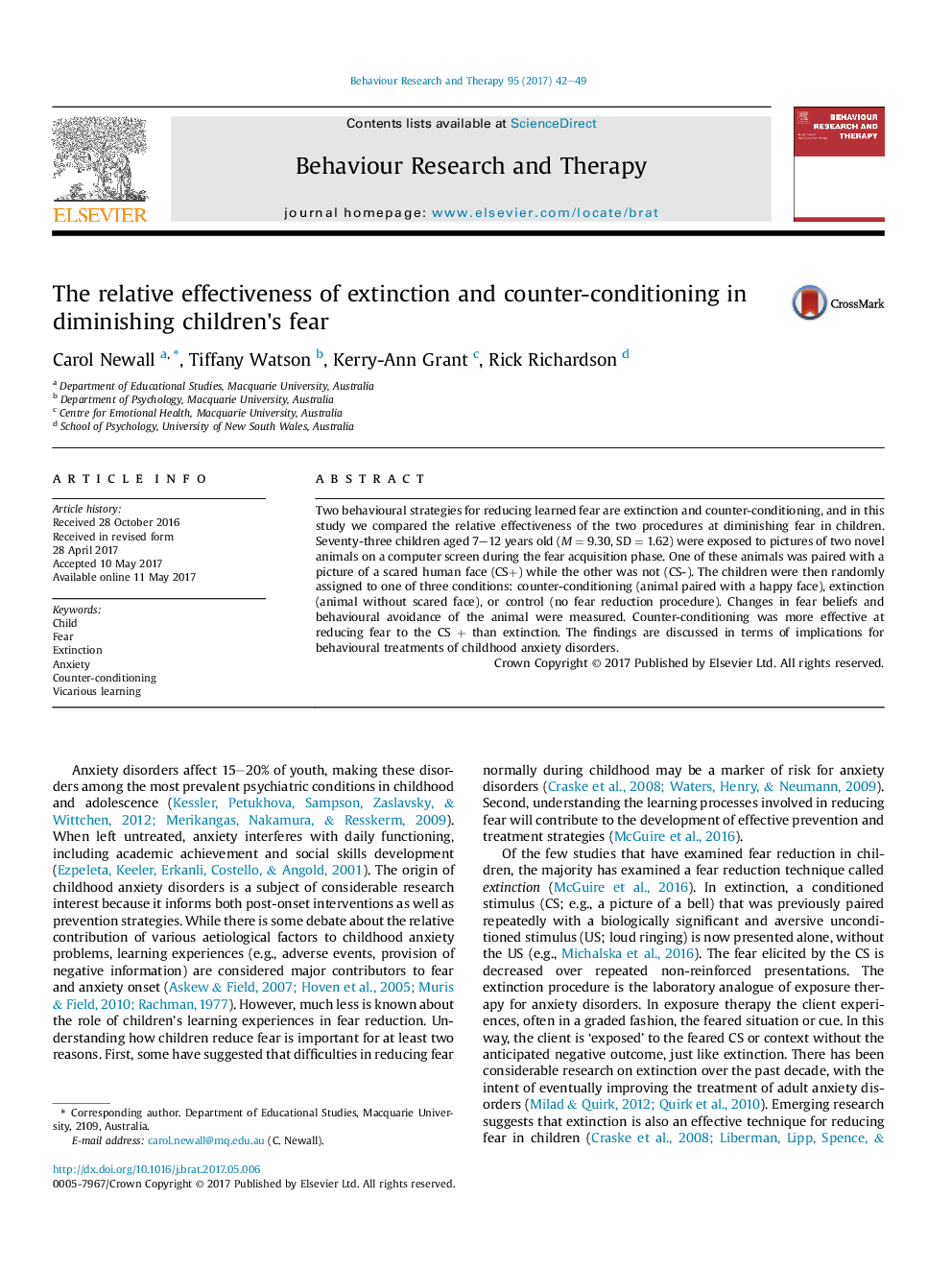| Article ID | Journal | Published Year | Pages | File Type |
|---|---|---|---|---|
| 5038246 | Behaviour Research and Therapy | 2017 | 8 Pages |
â¢Counter-conditioning was more effective than extinction at reducing fear in children.â¢Most children learned on one of the measures but only a few learned on both.â¢Including non-learners in fear reduction studies could mask results.â¢Counter-conditioning may be more appealing to anxious children than extinction.
Two behavioural strategies for reducing learned fear are extinction and counter-conditioning, and in this study we compared the relative effectiveness of the two procedures at diminishing fear in children. Seventy-three children aged 7-12 years old (MÂ =Â 9.30, SDÂ =Â 1.62) were exposed to pictures of two novel animals on a computer screen during the fear acquisition phase. One of these animals was paired with a picture of a scared human face (CS+) while the other was not (CS-). The children were then randomly assigned to one of three conditions: counter-conditioning (animal paired with a happy face), extinction (animal without scared face), or control (no fear reduction procedure). Changes in fear beliefs and behavioural avoidance of the animal were measured. Counter-conditioning was more effective at reducing fear to the CSÂ +Â than extinction. The findings are discussed in terms of implications for behavioural treatments of childhood anxiety disorders.
